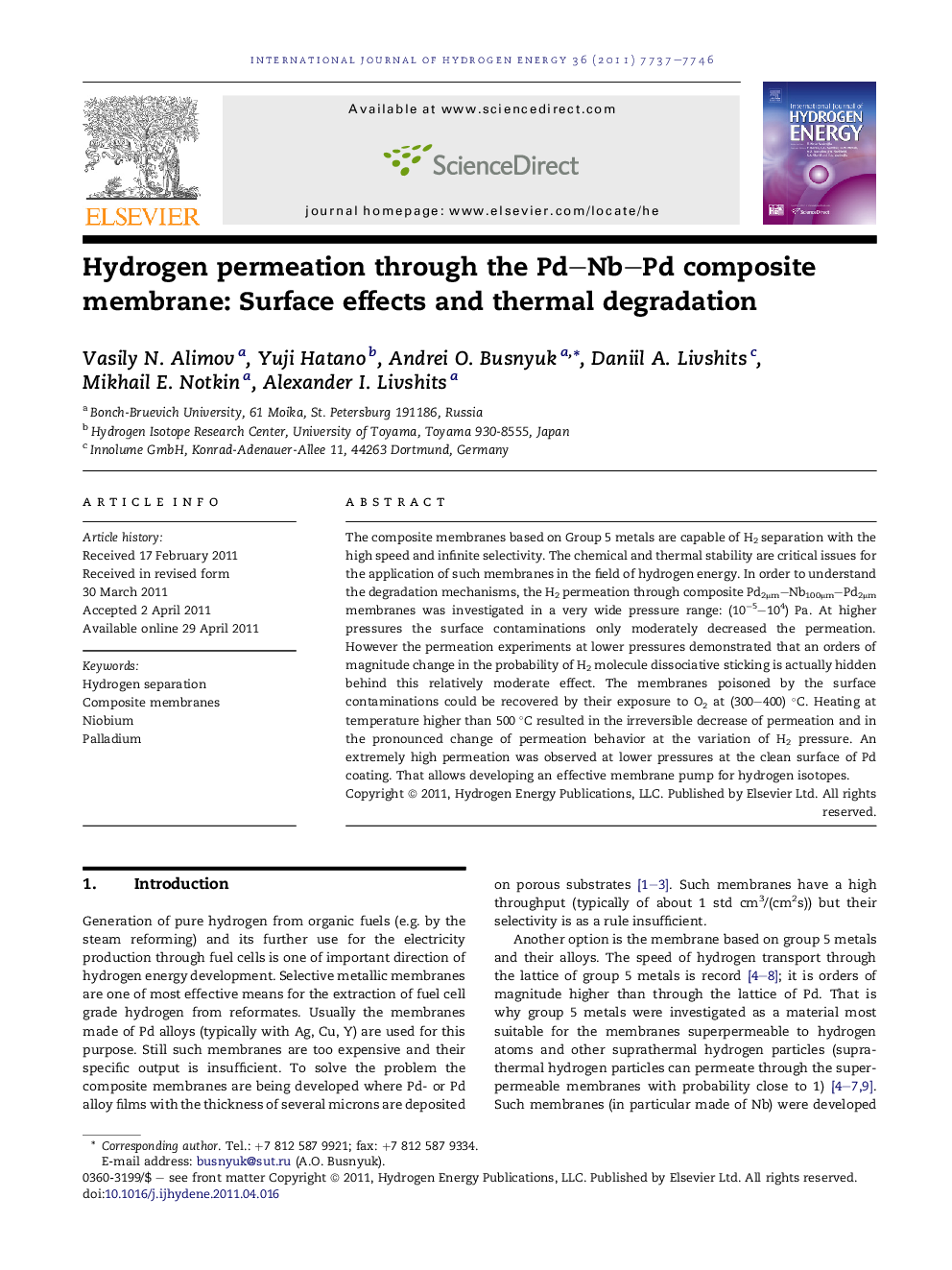| Article ID | Journal | Published Year | Pages | File Type |
|---|---|---|---|---|
| 1279303 | International Journal of Hydrogen Energy | 2011 | 10 Pages |
The composite membranes based on Group 5 metals are capable of H2 separation with the high speed and infinite selectivity. The chemical and thermal stability are critical issues for the application of such membranes in the field of hydrogen energy. In order to understand the degradation mechanisms, the H2 permeation through composite Pd2μm–Nb100μm–Pd2μm membranes was investigated in a very wide pressure range: (10−5–104) Pa. At higher pressures the surface contaminations only moderately decreased the permeation. However the permeation experiments at lower pressures demonstrated that an orders of magnitude change in the probability of H2 molecule dissociative sticking is actually hidden behind this relatively moderate effect. The membranes poisoned by the surface contaminations could be recovered by their exposure to O2 at (300–400) °C. Heating at temperature higher than 500 °C resulted in the irreversible decrease of permeation and in the pronounced change of permeation behavior at the variation of H2 pressure. An extremely high permeation was observed at lower pressures at the clean surface of Pd coating. That allows developing an effective membrane pump for hydrogen isotopes.
► The composite Pd–Nb–Pd membranes demonstrated much higher H2 permeation than Pd based membranes. ► The H2 permeation was investigated in the very wide pressure range: from 10−5 to 104 Pa. ►The membranes poisoned by the surface contamination could be recovered by their exposure to O2. ► Heating at temperature higher than 500 °C resulted in the irreversible decrease of permeation. ► The interdiffusion between Pd and Nb was found to be the cause of irreversible thermal degradation.
